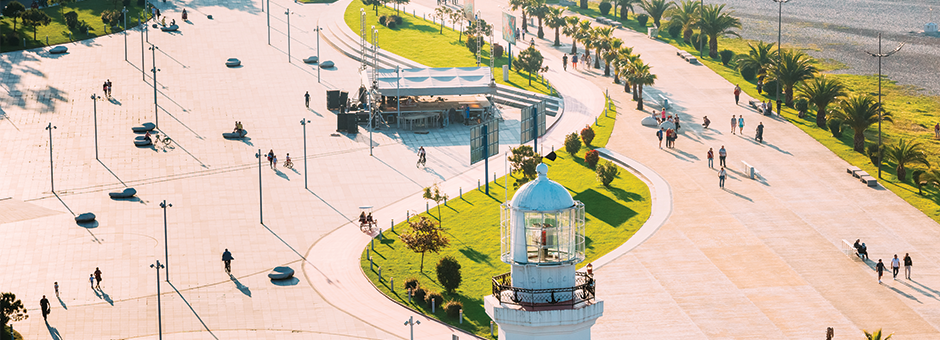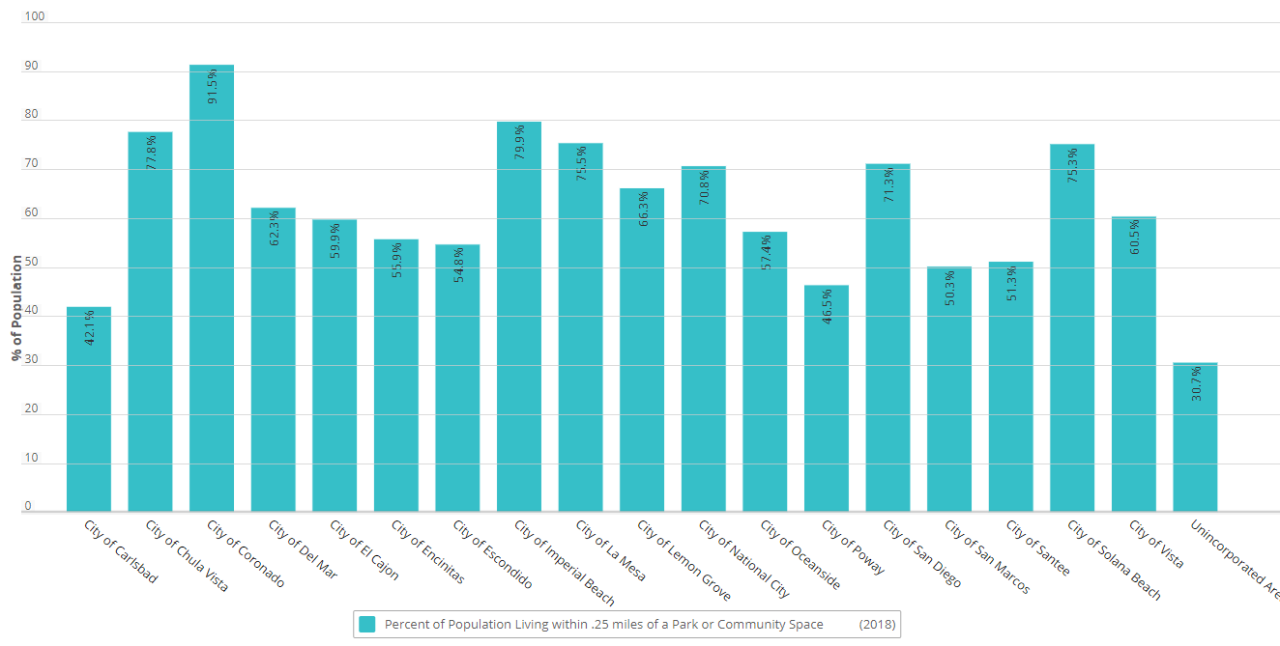
Author: David Palomino, Administrative Analyst III, County of San Diego Health and Human Services Agency – Office of Strategy & Innovation
Think about how long it takes you to walk to the nearest park or community space in your neighborhood. Can you walk there through a safe area with sidewalks or is it up a steep hill along a busy street? Factors like these can affect how accessible parks or other community spaces are to you and your neighbors and studies show that it can actually influence the overall quality of life in your community.
Five benefits of walkable communities include:
1. Health:
Walkable communities promote physical activity and good health. Walking 30 minutes per day can reduce the risk of obesity, cancer, heart disease, high blood pressure, and diabetes, and improve your mood and mental performance.
Walkable neighborhoods financially benefit the people who live and work there. People that live in a walkable community can walk to buy groceries, do their laundry, and other errands close to their home which supports local businesses and saves money that might otherwise go towards gas.
3. Community Strength:
Walking in your neighborhood builds a sense of community and allows you to interact with neighbors, forming connections and social support.
4. Crime Prevention and Safety:
Walking puts more ‘eyes on the street’ and helps prevent crime because there are more people around looking out for one another.
5. Environment:
As people walk more, there are fewer cars on the roads which leads to less traffic congestion, less air and noise pollution, and reduced water pollution.
Circulate San Diego has developed a Walkability Guide to help community members find out if their community is walkable and offers tips for working with cities to improve your community.
Access to community spaces and walkability are important measurements for helping our region to achieve the Live Well San Diego vision. To ensure our communities are moving in the right direction, the Live Well San Diego Built Environment Indicator tracks accessibility to community spaces.
The Live Well San Diego Indicators Steering Committee defines Community Space as any open space or built structure that encourages the public to engage in healthy physical activity and gets people out of their cars and out-and-about. The Steering Committee defines Walkability as the walking distance and the walking environment from a household to a Community Space. Live Well San Diego’s Built Environment Indicator sets the ideal distance as a ¼ mile (a five to ten minute walk) from one’s home with a reasonably walkable route to the community space is (i.e. not up a steep hill, in a safe area, etc.).
Walkability Scores are being added to the Live Well San Diego Indicators in 2019.
Currently, 61.3% of San Diego County residents live within a ¼ mile of a Park or Community Space.
Percent of Population Living within a Quarter Mile of a Park or Community Space – By Health and Human Services Agency Region

Map of San Diego County by Region

Percent of Population Living within a Quarter Mile of a Park or Community Spaces – By City

For More Information
In August 2018, the Live Well San Diego Data Summit was dedicated to discussing walkability and community spaces. Invited speakers included Rob Efird and Ross Martin of the County of San Diego Land Use and Environment Group. Watch Summit speakers here.